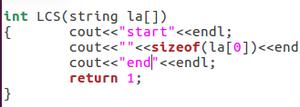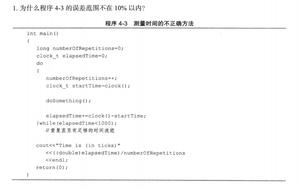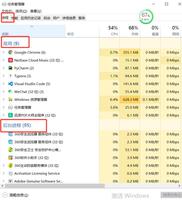Python中的反射怎么用?

在绝大多数语言中,都有反射机制的存在。从作用上来讲,反射是为了增加程序的动态描述能力。通俗一些,就是可以让用户参与代码执行的决定权。
在程序编写的时候,我们会写很多类,类中又有自己的函数,对象等等。这些类和函数都是为了后续代码服务,程序员决定什么时候用到哪一个类,什么时候调用某个函数。但很多时候,我们需要根据用户的需求来决定执行哪一段代码块。用户可能是通过点击,输入数据,或者其他方式发出指令,反射则将用户的指令传递到需要执行的那一段代码块。这个过程是自动执行的,无需人工去核对用户指令是否应该执行那一段代码,而是由反射机制自动查找该执行的代码块。大多数反射都是以web来进行举例说明,而反射本身的最常见的使用场景也确实是根据web的url不同来调用不同的函数。当然这里,我们不用讨论他的具体应用,只简单说明一下他的使用意义。
python的反射机制设定较为简单,一共有四个关键函数分别是getattr、hasattr、setattr、delattr。前两个最为常用,最后一个几乎很少用到。python本身定义的反射是指在内存中对容器里的某些元素进行操作,这个容器不仅仅包括类,还包括函数,对象,这三者不同的是在查找对象的时候,除了会查找对象自身,还会去创建对象的类里面进行查找。要用实际例子来说明一下python中的反射具体作用,先看一下需求。所有的语言中,我们都可以轻易办到让用户自由输入一个数据,然后打印那个数据,这是最简单的人机交互。在代码里的实现过程是,生成一个变量,获取用户输入数据,赋值给变量。打印变量。同理我们可以在某个类中定义两个函数,然后要求用户输入数据,根据用户输入的数据来决定具体执行哪一个函数,这就是一个人工的反射机制。当需要查找的函数只有两条的时候,我们可以用if——else进行判断。但如果数据达数百条之多,那重复性使用if不仅效率低下,而且代码量也难以估量。这种情况,就需要用到反射。
本实例讲述了python中反射用法
import sys, types,newdef _get_mod(modulePath):
try:
aMod = sys.modules[modulePath]
if not isinstance(aMod, types.ModuleType):
raise KeyError
except KeyError:
# The last [''] is very important!
aMod = __import__(modulePath, globals(), locals(), [''])
sys.modules[modulePath] = aMod
return aMod
def _get_func(fullFuncName):
"""Retrieve a function object from a full dotted-package name."""
# Parse out the path, module, and function
lastDot = fullFuncName.rfind(u".")
funcName = fullFuncName[lastDot + 1:]
modPath = fullFuncName[:lastDot]
aMod = _get_mod(modPath)
aFunc = getattr(aMod, funcName)
# Assert that the function is a *callable* attribute.
assert callable(aFunc), u"%s is not callable." % fullFuncName
# Return a reference to the function itself,
# not the results of the function.
return aFunc
def _get_Class(fullClassName, parentClass=None):
"""Load a module and retrieve a class (NOT an instance).
If the parentClass is supplied, className must be of parentClass
or a subclass of parentClass (or None is returned).
"""
aClass = _get_func(fullClassName)
# Assert that the class is a subclass of parentClass.
if parentClass is not None:
if not issubclass(aClass, parentClass):
raise TypeError(u"%s is not a subclass of %s" %
(fullClassName, parentClass))
# Return a reference to the class itself, not an instantiated object.
return aClass
def applyFuc(obj,strFunc,arrArgs):
objFunc = getattr(obj, strFunc)
return apply(objFunc,arrArgs)
def getObject(fullClassName):
clazz = _get_Class(fullClassName)
return clazz()
if __name__=='__main__':
aa=getObject("inetservices.services.company.Company")
bb=applyFuc(aa, "select", ['select * from ngsys2',None])
print bb
以上是 Python中的反射怎么用? 的全部内容, 来源链接: utcz.com/z/524857.html






